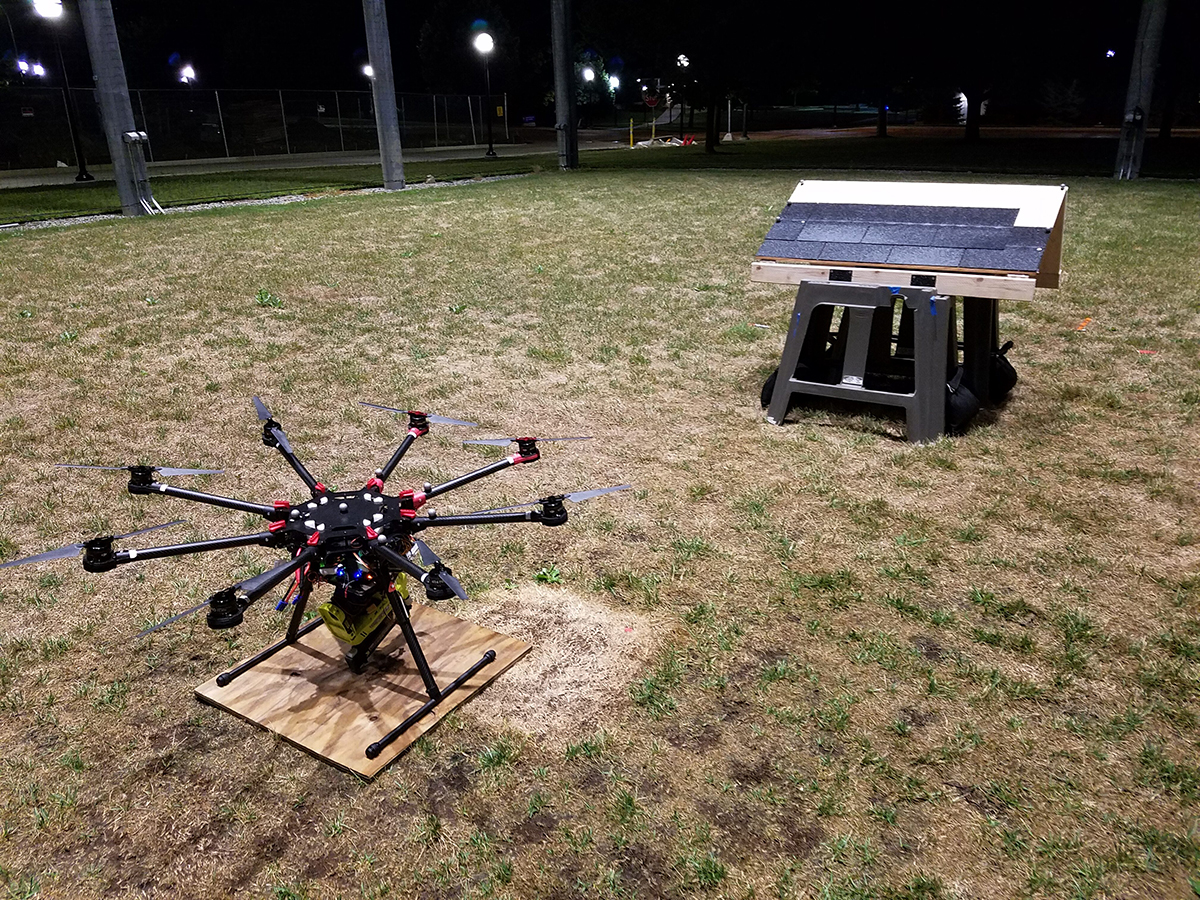There have been many uses proposed for drones: photography and videography, certainly; package delivery, and aerial 3D mapping. Now, researchers at the University of Michigan have proposed yet another possibility for these scaled-down aircraft—as flying nailguns.
While the FAA may have banned people from attaching flamethrowers to their octocopters, U of M researchers say the armed DJI-S1000 is here to help humans, not hurt. By creating an autonomous roofing robot, they hope they can spare humans from doing the dangerous job of applying asphalt shingles. With location markers and video cameras sending imagery to be processed through a modified version of ArduPilot, an open-source autopilot software, the drone is able to find the edges of the shingle, nail within a one-inch gap, and apply the adequate download pressure to nail the shingle to the roof.
Currently, this drone roofer can’t compete with the speed of a human worker, and it only has a 10-minute lifespan, but the researchers hope they can connect the drone to a generator on the ground, as well as a pneumatic system to put in an upgraded nailgun. They also hope to upgrade the onboard sensing for more accurate, quicker wayfinding.
The nail gun drones are just some of many proposals for using drone tech in AEC, ranging from the highly speculative, such as GXN’s proposal for flying skyscraper repair robots, to the in-use—such as many contractors’ application of drone photography on job sites. Everything including using drones for painting has been proposed by researchers, but even as technology improves, drones are still only suited to replacing the most monotonous and dangerous human tasks.
